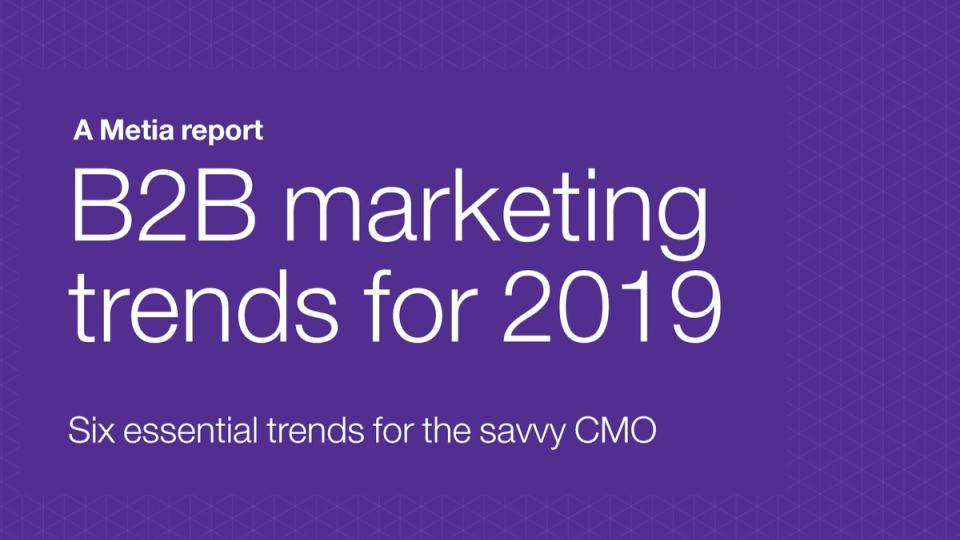
Written by Stephen Waddington – Managing Director at Metia
Machine learning, leaky funnels, value exchange, hypertargeting, and customer advocacy are all opportunities for B2B marketing in a new report by Metia.
It’s day six in new role as UK managing director at Metia. We’ve published a report this week by my colleague Pete Morgan that explores new approaches to B2B marketing while also recognizing the importance of fundamentals. It’s based on insight gained from working with clients to generate measurable returns during 2018.
You can download a copy here. In the meantime, here’s a summary.
1. Machine learning transforming marketing, but humans still needed
Artificial intelligence (AI) promises long-term benefits but its maturity in marketing is likely decades away. That said, machine learning is already improving the efficiency of sales and marketing investments. Marketing tech vendors are enabling organizations to match customer data with third-party data. Optimizing campaigns requires content that informs, educates, and stimulates action—all of which still require human intelligence and judgement to determine the best approach.
2. Website load times critical to stopping leaky sales funnels
Landing page optimization is more than a game of optimal gains. Slow load times are often the weakest link in a campaign and lead prospects to head elsewhere, according to the Metia Performance Benchmark Index. If a page takes more than two seconds to load you’ll lose two out of every five people. If it takes more than four seconds, only three in 10 people will reach the intended destination. Get your marketing basics right and sort out the speed of your landing pages.
3. Smart brands rethinking lead generation post-GDPR
GDPR puts the value exchange between brands and their customers under the spotlight. Trust must be at the heart of any relationship. Instead of relying on direct response tactics, smart marketers are balancing investment with brand building. Advertising and public relations help generate demand at the top of the funnel. The goal is to build reputation, increase awareness, and deepen the emotional connection that’s critical to high-value decision making.
4. Hypertargeting: Just because you can doesn’t mean that you should
It’s possible to track and target an individual across the internet and between devices, allowing marketers to serve personalized content at virtually every moment that a user is online. This should increase the efficiency and effectiveness of marketing investment, but many marketers are losing sight of fundamentals. Irritating your audience at scale by chasing them around the internet at inappropriate times will not help you build your brand. Short-term sales initiatives need to be balanced with long-term business benefits.
5. It’s time sales enablement was focused on your customers
Sales enablement planning is typically based on rational decision making arrived at through the use of standardized sales tools, templates, and processes. It must be focused on your customer rather than your sales team, and it begins with listening first and foremost. Effective sales teams are empowered to understand and utilize triggers as a means of building relationships with customers and addressing their priorities. Providing a suite of content is not enough.
6. Changing face of customer advocacy
Prospective buyers want to hear from other buyers to credential an organization and its products and services. Organizations are evolving their storytelling approach using new content formats such as animation, infographics, and video to engage buyers throughout the purchase journey. Targeted paid media using LinkedIn or Twitter enables this content to be delivered directly to the individuals that matter to your business.
Further information
If any of these issues strike a chord with your business please get in touch. We’ve a stack of case studies that illustrate these points and would love to talk them through with you.




